‘It all starts with enthusiasts’: how motorsport appeared in Tatarstan
From racing at the racetrack to the champions of Russia and Europe: the formation stages of modern motorsport in the republic
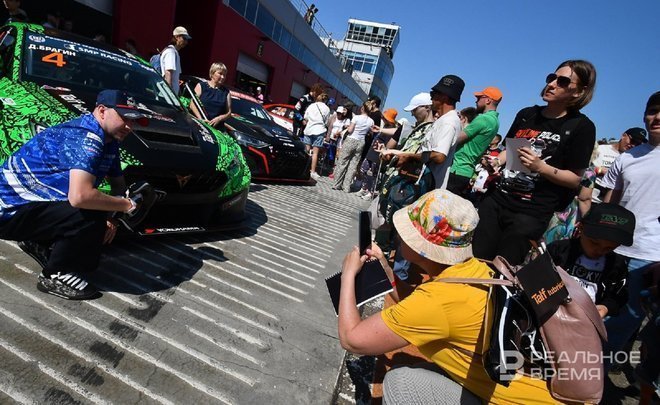
Tatarstan deservedly bears the unofficial title of one of the capitals of motor sports in Russia. The motorsport complex, which is one of the eight largest in the country, is located here. A galaxy of strong pilots has been brought up in the republic: Vladimir Chagin, Firdaus Kabirov, brothers Ayrat and Radik Shaimievs, father and sons Jaudat, Irek and Radik Minnakhmetovs, father and son Ilkham and Ildar Rakhmatullins, Valentin and Eduard Nikolaevs, Ilgizar and Ayrat Mardeev, Dmitry Bragin, Timur Shigabutdinov, Timur Timerzyanov, Andrey Karginov, and a whole a number of other athletes whose names are well known not only throughout Russia, but also far beyond its borders. Motorsport clubs are gaining experience and weight. One of the strongest teams in Russia — TAIF Motorsport — celebrated its 20th anniversary in 2023 with a number of bright victories. In the material of Realnoe Vremya — about the history of the formation and development of motorsport in Tatarstan, the enthusiastic people who made it possible, today's day and plans for the foreseeable future. Part one.
Motorsport has always been in Russia
But not everywhere, and not at all times, it received such close attention from the authorities. Even before the October Revolution, international auto races were held in the Russian Empire, among other things. In the early years of Soviet power, car racing was considered a bourgeois relic. However, already in the era of the NEP, motor rallies and races were revived again. A vivid example of this is described in the novel by Ilf and Petrov “The Twelve Chairs”.
Motorsport gained real popularity in the USSR in the second half of the 1930s, when car racing became not only a race for victory, but also a serious test of strength for the products of the Soviet automotive industry.
The Great Patriotic War interrupted the development of Soviet motorsport. But already in 1946, it began to gain momentum again. All automotive companies considered it a matter of honour to have their own teams. Numerous amateur enthusiasts also made racing cars. And by the early 1960s, the first special racing tracks began to appear in the Soviet Union. By the way, it was then that closed-circuit race appeared in the USSR. The beginning of the rapid and widespread development of autocross on trucks and karting belongs to the same period. In the Tatar ASSR, these first nimble cars appeared in the 60s, and by the early 70s, dozens of sections had already been opened at large enterprises, DOSAAF departments, schools. In October 1970, the Kazan championship was held in the village of Derbyshki opposite the House of Culture. An interesting point: then karting was an adult sport. But today, it is the best school for educating future champion pilots from childhood.
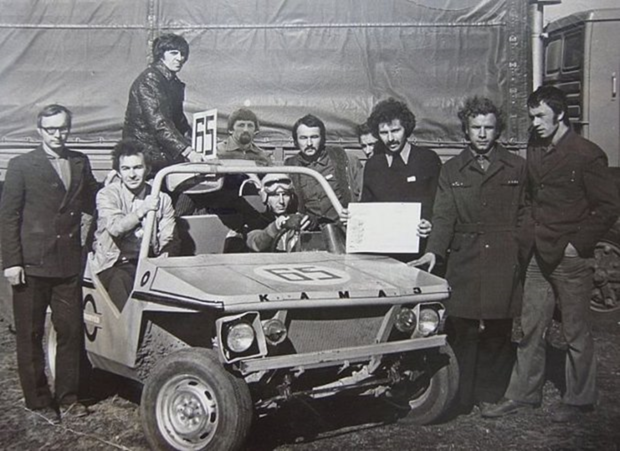
In Tatarstan, motorsport also appeared not in the recent history of the republic. There were several stages, and the first of them was during the USSR period. Few people remember, but in 1971, automobile sports competitions were held in the Kazan village of Mirny. In the same year, on the site in front of the Central Stadium, the auto gladiators of the Spartak society competed in the automobile duathlon. Yudinsky quarry also remembers what real speed is, where the races dedicated to the 50th anniversary of the formation of the Komsomol of Tatarstan took place.
One of the legends of Soviet motorsport is Master of Sports of the USSR Sergey Petrukhin, who competed for the Kazan DOSAAF and became the silver medalist of the Soviet Union in racetrack racing in 1986, and in 1992 took silver at the CIS Autocross Championship. Another motorsport athlete from the capital of Tatarstan, Gali Valiullin, shone on the automobile multidiscipline competition. And the most high-status one, probably, in those days was the USSR Autocross buggy championship, which took place in Naberezhnye Chelny. There, the Honoured Master of Sports of Russia and Tatarstan, first champion of the republic in winter ring racing (1978), and later — the eight-time champion of Russia in cross-country buggy and the first director of the foundation for the development of motor sports in Naberezhnye Chelny — Farit Badretdinov was out of competition.
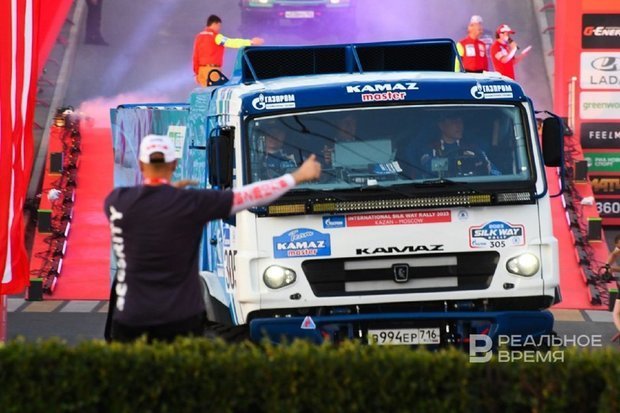
During the period of perestroika and later, when there was a change of political course and the Soviet Union went down in history, the difficult economic situation in the country was not conducive to the development of motorsport. Perhaps, the only exception is the KAMAZ-Master created in 1988. This year, the Naberezhnye Chelny trucks made their debut at the Yelch rally held in Poland. The professional team made its debut in the Paris — Dakar rally in 1991 and won this race for the first time in 1996, taking the first highest European award in motorsport in the history of Tatarstan and since then becoming a true trendsetter in this discipline.
A new epoch
That time for Tatarstan motorsport was the mid-1990s.
“The first club (today, by right, legendary) was Namus, in which Asgat Safarov, Radik Ramazanov, Andrey Sakharov, who headed the Road Safety Fund at that time, were engaged," Adel Mullakhmetov, who is directly related to the motorsport of the republic, and at one time also told in an interview with Realnoe Vremya, headed the Kazanring Canyon autodrome.
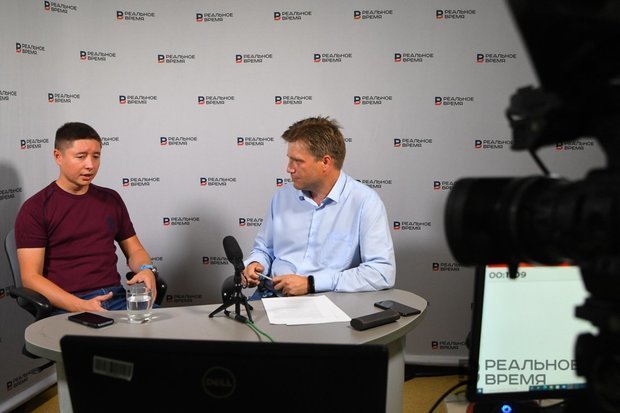
Anyway, as for the chronology of events, one of the legends of Tatarstan and Russian motorsport — the master of sports of international class, champion of Russia in autocross, co-founder of Suvar club Ilkham Rakhmatullin somewhat disagrees with Adel Mullahmetov.
“The first motorsport club in the modern history of Tatarstan was, after all, KAMAZ-master. And it was we who started driving passenger sports cars in the republic," he said. And that's how it was:
“My friend Ayrat Shaimiev and I went to Togliatti for the Silver Rook. And after this Silver Rook, he says: “Can I take a ride in a sports car?" I made an agreement with my racing friends, they gave him a car for three laps. But then he was barely stopped. He liked it so much! And when we were returning, literally in the car, it was decided to create our own club. At that time, our motorsport luminary, Sergey Petrukhin, was invited. Then they drove three freight cars, disassembled them, welded arcs there, and it all started from there. It was probably the end of 1995. In 1996, we already officially registered the club, which we called Suvar.
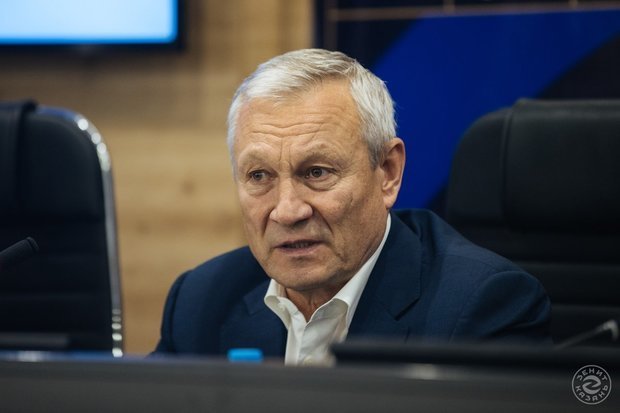
For Ilkham Rakhmatullin himself, friendship with machines began from childhood: both his father and his brother are first-class drivers. But as he admitted himself, at first there was no thought to become a professional pilot. Then fate put everything in its place by itself:
“I rode a racing car around the winter racetrack and even won this race — the organisers' race. And at that time they still went without stud. But it's ok— I held the car. And there was also a so-called Interdirector in Naberezhnye Chelny — the KAMAZ MTC organised the race there. I also drove one race there — already fully at the Naberezhnye Chelny Racetrack. And then with Ayrat, when they created the club themselves, and everything went on this wave. Then Rustam Nurgalievich joined us — Timerkhan club, then Genghis Khan — Jaudat Midhatovich. And then there was such a boom! And the residents of Naberezhnye Chelny got excited, and Nizhnekamsk created a club... There was a good composition. We even held our races without Togliatti," Ilkham Rakhmatullin shared his memories.
And soon the first professional track for car racing appeared in Tatarstan. It was built on the initiative of Rustam Minnikhanov (at that time — the head of the Vysokogorsky district of the Republic of Tatarstan).
“Arkady Nikolaevich Dadaev is a fan of both our republic and this sport, I will not list all his titles. I can only say that he is an honoured coach of Russia, one of those who drew this track literally “on his knee”. There was a quarry in the Vysokogorsky district, and it was there that it was decided to place the track. Rustam Nurgalievich decided to allocate the land, Ayrat (Shaimiev — ed.) gave equipment ... we all watched the construction with interest, because we usually went somewhere for competitions, but here — in Kazan, at home, there was such a track that gave us the opportunity to train. It actually appeared together with the beginning of our passion for motorsport," Ilkham Rakhmatullin told about one of the key events of the formation of motorsport in Tatarstan.
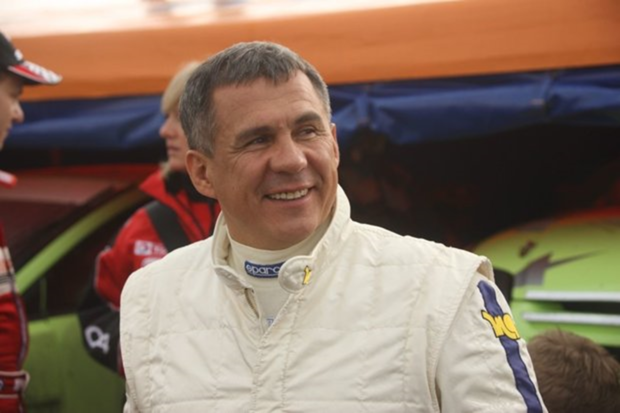
Rustam Minnikhanov himself, in a comment to Realnoe Vremya, modestly kept silent about his role in the appearance of the first race track in the republic. But about the fact that he has been friends with cars since childhood, he told:
“This is a hobby since childhood. My father drove a GAZ-69-A. I often helped him with this car, during the repair I noticed various details for myself. Already in high school I got behind the wheel of the first motorcycle. So after school, I firmly decided to link my future with vehicles and went to enter the Kazan Agricultural Institute, choosing the profession of a mechanical engineer.
It did not work for a long time by profession — fate decreed otherwise: the republic needed strong managers. But the craving for the roar of engines and speed has not disappeared anywhere.
“In 1995, the Vysokaya Gora track was built near Kazan, where Russian and international competitions began to take place. The Tatarstan Motorsport Federation was established in the republic. In the same period, in 1996, I started racing professionally. Of course, the transition from amateurs was not easy. A tight training process, completely different physical activities, as well as higher competition on the track. But that's what I like about motorsport. Here it is necessary to constantly improve your skills, maintain concentration, objectively evaluate your experience and the experience of your rivals. The basis of success is the result of the work of the whole team. Engineers, mechanics — each of them makes his contribution to the victory on the track," the master of sports of international class, repeated champion of Russia, rais of Tatarstan Rustam Minnikhanov is sure.
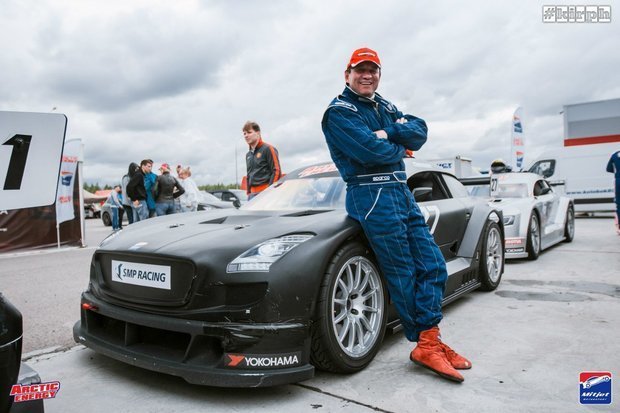
“The autocross track on Vysokaya Gora was opened by Rustam Nurgalievich in June 1996. At that time, I was still working in Arsk — chairman of the regional consumer union. And that's when I got behind the wheel for the first time on this track. Then a little time passed, he was appointed minister, and I headed the Vysokogorsky district," recalls another legend of Tatarstan and Russian motorsport, master of sports of international class, winner of the European Autocross Championship, champion of Russia, founder of the Genghis Khan racing team and the karting club of the same name, Dzhaudat Minnakhmetov.

Radik Shaimiev closely watched how the training and competitions were going on. The mathematical mindset and the ability to see the whole picture soon led to that he was driving a racing car.
“I got behind the wheel for the first time as a kid at all — my father sent us to the village. We spent our vacations only there. Our father is a good fellow, he brought us up rigidly: he always said that only a working person can succeed. In the 4th grade, he already earned money himself: UAZ, GAZ-51. But I wasn't interested in motorsport at all. As a child, everything was different: football, judo, then martial arts, the army. And then my brother and his friends started racing. I wondered: what were they doing there? During the first year, I just stood there and watched them do it. And then I look — they were going wrong. There are inertial things here: entry points, apexes, exits — where you need to press already, and they break this trajectory. I started asking myself questions inside: so, you can try it too, since you think like that. And then I went. It was 1997 or 1998. The first race of the organisers — they gave to try a car. I got carried away, I went," Radik Shaimiev, master of sports of international class, European champion in autocross, told about how his entry into motorsport took place.
And this was the beginning of the formation of another living legend of Tatarstan, Russian and world motorsport.
“If you defeat yourself, you will defeat everyone!”
Master of Sports of International level Radik Shaimiev is sure of this. He defined his life motto for himself when he left for the army, and he was never disappointed in it. He is also sure that you can admire those who have reached the top, and it doesn't matter in what: art, business, sports, but everyone should set goals for themselves. And to be held accountable for successes and failures. And don't be afraid to leave your comfort zone.
“One should always develop. And there is always room to grow. The only question is our own selfishness: it is very easy to sit at the same local level, say that we have achieved everything, and, without thinking too much, continue to stamp the same results. But I say: “Go and see — there are faster people, force yourself to change the usual environment!” We calm ourselves all our lives and do not want to leave the usual boundaries. But it's worth getting out of your comfort zone to realise that you are far from the best ... Look for the best and try to surpass them. Then there will be no such satiety of life. And there are always the best," says the racer.
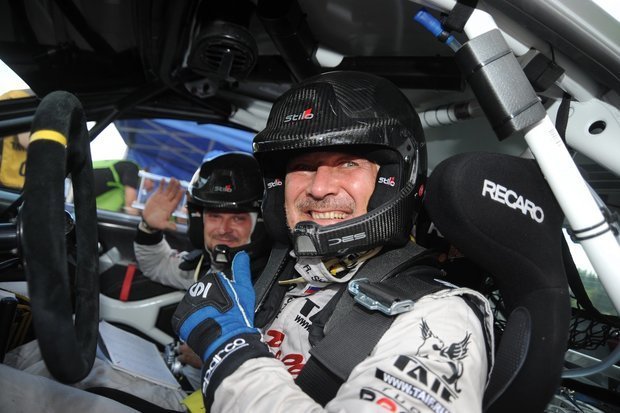
By the way, this is exactly how Radik Shaimiev once got to the European Championship — in search of new tasks and new opportunities:
“I entered autocross first in motorsport. Then I tried spikes and all that. But I was interested in innovations — I wanted something new. Tolyatti, we can say, trained on us. How many speed-change boxes were broken until they got good sequential boxes (laughs). And then I look — our guys from Suvar tried to achieve results in Europe. We buy Toyota Corolla from a German — this is a former rally, champion car. From the international classic rally. However, it turned out to run into the European Championship halfway — there was an unsuccessful start at the Russian Championship in Samara: I was pressed against the side, and these were the famous shots when I was standing on the roof of the opponent's car with my rear wheels. We recovered — and went there. Having missed three or four stages, we won more first places on the move and became bronze. I told the guys: the following year would be mine. I would become a champion. And in the following year, I become a champion. And then I realise that if I do it easily, then I need to load myself further. And just the German who serviced the Toyota says: “You should try the rally.” And in 2003, after the championship, I started trying. And so, I'll say this: I've become addicted, it seems, for life. Amazing discipline. It was tried by great champions such as Michael Schumacher, Valentino Rossi... I saw him even on the tracks. This is the queen of sports. To win there, you need to know a lot and be able to think. So we probably became the only crew from Tatarstan who started performing there.
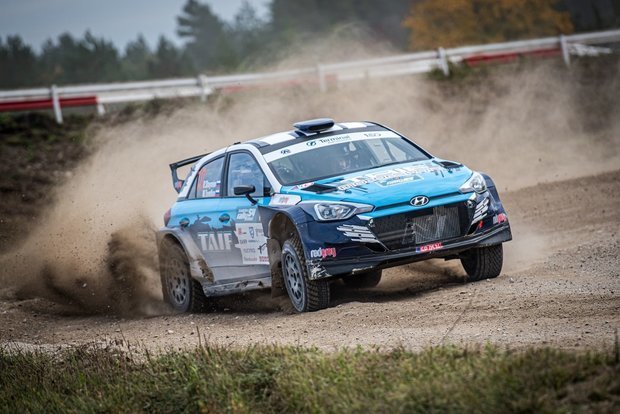
Constant self-improvement, work on mental alertness, and the ability to simultaneously solve several tasks — this is one of the key secrets of success. Not only in racing, but in life, Radik Shaimiev is sure.
Timur Shigabutdinov, another well-known pilot from Tatarstan, a master of sports of international class, president of one of the strongest motorsport clubs in Russia, TAIF Motorsport, listens to the advice of an experienced comrade and partly mentor. This summer the club celebrated its 20th anniversary. Moreover, he celebrated it with a victory at the home stage of the G-DRIVE of the All-Russian Ring Racing competitions of the SMP RSKG Touring.
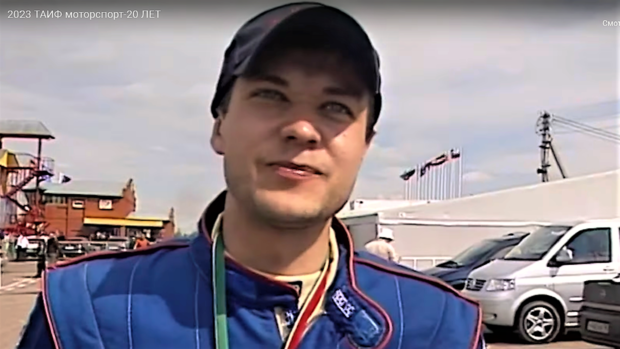
And the history of TAIF Motorsport began just in 2003 — when Radik Shaimiev achieved his first victories in Europe and began a new stage of his motorsport career — in a classic rally. But about what role he played in the formation of the new club, then still bearing the name MX-Motorsport, and personally Timur Shigabutdinov as a pilot, in the next part of the cycle.
Ad of TAIF JSC.